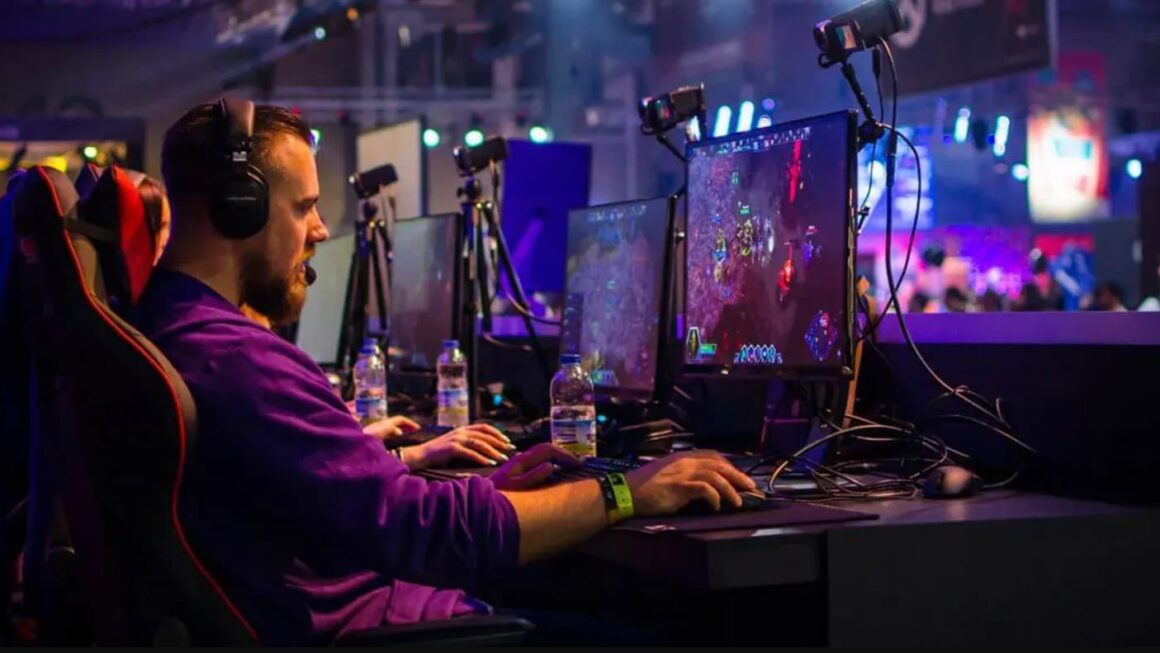In recent years, the phenomenon of livestreaming has taken the gaming world by storm. Livestreaming refers to the act of broadcasting live video content, typically gameplay footage, over the internet in real-time. This practice has revolutionized the way gamers interact with each other and experience their favorite games.
Once a niche activity, livestreaming has exploded in popularity, attracting millions of viewers and broadcasters worldwide. The rise of high-speed internet, advancements in streaming technology, and the increasing accessibility of streaming platforms have all contributed to this growth.
Platforms like Twitch and their role in the gaming community
At the forefront of the livestreaming revolution is Twitch, a platform specifically designed for streaming video games. Twitch has become a central hub for the gaming community, providing a space for gamers to showcase their skills, connect with like-minded individuals, and build dedicated followings.
Other platforms, such as YouTube Gaming and Facebook Gaming, have also emerged as significant players in the livestreaming space, offering alternative venues for gamers to share their experiences and engage with audiences.
The impact of livestreaming on gaming culture cannot be overstated. It has fundamentally reshaped the way we perceive and engage with video games, transcending the traditional boundaries of solitary play. Livestreaming has transformed gaming into a shared, social experience, fostering new communities, creating opportunities for professional gaming careers, and influencing the way games are developed and marketed.
The Evolution of Gaming Experience
Traditionally, video games were primarily designed as a single-player experience, where individuals would immerse themselves in virtual worlds, complete quests, and progress through narratives alone. This solitary approach allowed players to escape into their own personal gaming adventures, free from the distractions or influences of others.
The shift towards multiplayer and online gaming
With the advent of the internet and advanced networking technologies, multiplayer and online gaming gained significant momentum. Players could now connect and compete with others from around the world, fostering a sense of community and shared experiences. Games like World of Warcraft, Counter-Strike, and Call of Duty revolutionized the gaming landscape by introducing massively multiplayer online environments and competitive matchmaking.
Livestreaming as a new way to experience games
Livestreaming has taken the social aspect of gaming to a whole new level. While traditional multiplayer gaming allowed players to interact within the game itself, livestreaming enables gamers to share their experiences with a broader audience. Viewers can watch skilled players showcase their abilities, observe unique playthroughs, and engage in real-time discussions with broadcasters and fellow viewers.
This shift has transformed gaming from a purely interactive experience into a spectator-driven phenomenon. Livestreaming has introduced a new dimension to gaming, blurring the lines between player and audience. Games are no longer just played but also consumed as entertainment, much like traditional sports or other live events.
By embracing livestreaming, gamers have the opportunity to connect with a global community, share their passion, and experience games in a more immersive and social way.
The Rise of Gaming Influencers and Communities
The rise of livestreaming has given birth to a new breed of online personalities known as gaming influencers. These individuals have amassed massive followings by showcasing their gaming skills, engaging with their audiences, and cultivating unique personalities on streaming platforms.
Influencers like Ninja, Pokimane, and Dr. Disrespect have become household names in the gaming world, attracting millions of viewers and followers. Their popularity extends far beyond the gaming sphere, as they have become cultural icons and influential figures in their own right.
Building communities around livestreams
One of the most significant impacts of livestreaming has been the creation of vibrant, dedicated communities centered around broadcasters and their content. Viewers can interact with each other and the streamer through live chats, fostering a sense of belonging and camaraderie.
These communities often transcend the boundaries of the livestreams themselves, spilling over into social media platforms, forums, and even real-life meetups and events. Fans can connect with like-minded individuals, share their passion for gaming, and forge lasting connections.
Livestreaming has revolutionized the way gamers experience and interact with their favorite titles. Instead of passively consuming games, viewers can actively engage with broadcasters, offer suggestions, and even influence the gameplay itself.
This level of engagement and connection has created a sense of ownership and investment in the gaming experience. Viewers feel like they are part of a larger community, sharing in the triumphs and challenges of their favorite streamers.
Moreover, livestreaming has allowed gamers to connect with their idols in a more personal and intimate way, breaking down the barriers that traditionally existed between creators and their audiences.
Monetization and Career Opportunities
Livestreaming has not only revolutionized how gamers interact with their favorite titles but also how they sustain themselves financially. For many gamers, what was once a hobby has transformed into a lucrative career path. Platforms like Twitch, YouTube Gaming, and Facebook Gaming offer various avenues for content creators to monetize their streams, such as through subscriptions, donations, and ad revenue.
Subscriptions are one of the primary revenue streams for streamers. Viewers can subscribe to a channel for a monthly fee, unlocking exclusive perks like emotes and badges. Tiered subscription models offer viewers different levels of benefits, incentivizing them to support their favorite creators further. Additionally, platforms often share a portion of the subscription revenue with the streamer, providing a stable source of income.
Donations are another significant source of income for streamers. Viewers can tip their favorite creators during live streams, either through built-in platform features or third-party services like PayPal or Patreon. These donations can vary widely in size, from small tokens of appreciation to substantial contributions, and can make up a significant portion of a streamer’s income.
Ad revenue, although less predictable, can also contribute to a streamer’s earnings. Platforms typically display ads before, during, or after streams, with streamers receiving a share of the revenue generated. While ad revenue may fluctuate based on factors like viewer count and advertiser demand, it provides an additional stream of income for content creators.
Sponsorships and Partnerships with Brands
As livestreaming continues to grow in popularity, brands are increasingly turning to influencers and content creators to reach their target audience. Sponsorships and partnerships with brands offer streamers additional revenue opportunities while allowing companies to promote their products or services in an authentic and engaging manner.
Sponsorships can take various forms, ranging from product placements and sponsored streams to long-term brand ambassadorships. Streamers may promote gaming peripherals, energy drinks, apparel, and other products relevant to their audience during their streams. These partnerships often provide streamers with financial compensation, free products, or both in exchange for exposure to their viewers.
In addition to direct sponsorships, streamers may also participate in affiliate marketing programs. By promoting products or services through unique affiliate links, streamers can earn commissions on sales generated through their referrals. Affiliate marketing offers streamers a way to monetize their influence without the need for explicit sponsorships, providing flexibility and scalability in their revenue streams.
Professional Esports Streaming and Tournaments
For elite gamers, professional esports streaming and tournaments represent the pinnacle of monetization and career opportunities in the gaming industry. Esports organizations and tournament organizers host competitions with substantial prize pools, attracting top talent from around the world. Professional players not only compete for cash prizes but also earn salaries and sponsorships from their teams.
Esports streaming allows professional players to showcase their skills to a global audience, with viewers tuning in to watch their favorite teams and players compete in various titles. Major esports events often attract millions of viewers across streaming platforms, with sponsors eager to capitalize on the exposure and engagement generated by these tournaments.
In addition to competing, professional players may also stream their practice sessions, providing insights into their gameplay strategies and techniques. These streams offer fans an opportunity to learn from their favorite players while generating additional revenue through subscriptions, donations, and sponsorships.
Overall, monetization and career opportunities in the gaming industry have expanded significantly with the rise of livestreaming and esports. From casual content creators to professional players, livestreaming offers a diverse range of paths for gamers to turn their passion into a sustainable livelihood. As the industry continues to evolve, the opportunities for monetization and career growth are likely to expand further, shaping the future of gaming culture and entertainment.
Exploring Instagram Followers
In recent years, social media platforms have become integral to gaming culture, offering gamers and content creators additional avenues to connect, share content, and build communities. Among these platforms, Instagram stands out as a hub for visual content, providing gamers with a platform to showcase their personalities, gaming setups, and highlights from their streams. With over a billion active users, Instagram has emerged as a powerful tool for gamers to engage with their audience and expand their reach beyond traditional livestreaming platforms.
Instagram’s visual nature makes it well-suited for sharing gaming-related content, including screenshots, gameplay clips, and behind-the-scenes glimpses into the lives of content creators. Gamers often use Instagram to express their creativity, share their gaming achievements, and connect with like-minded individuals who share their passion for gaming. From fan art to cosplay photos, Instagram offers a diverse array of content that reflects the breadth and depth of gaming culture.
Influencers and Their Followers on Instagram
In the realm of gaming, influencers play a crucial role in shaping trends, promoting products, and building communities. Many gaming influencers have amassed large followings on Instagram, where they share a mix of gaming-related content, personal updates, and sponsored posts. These influencers leverage their presence on Instagram to connect with fans, attract new followers, and collaborate with brands on sponsored campaigns.
Instagram allows influencers to showcase their personalities and interests beyond gaming, offering glimpses into their everyday lives and hobbies. By sharing relatable content and engaging with their followers through comments and direct messages, influencers foster a sense of community and belonging among their audience. Additionally, influencers often use Instagram to promote their livestreams, gaming merchandise, and other revenue streams, driving traffic to their streams and increasing viewer engagement.
The Impact of Instagram Followers on Livestreaming and Gaming Communities
The influence of Instagram extends beyond the platform itself, shaping the dynamics of livestreaming and gaming communities as a whole. Gamers with large Instagram followings often have a built-in audience for their livestreams, allowing them to attract viewers from diverse backgrounds and geographic locations. By cross-promoting their streams on Instagram, gamers can reach a broader audience and increase their visibility within the gaming community.
Moreover, Instagram followers play a vital role in supporting content creators financially through subscriptions, donations, and sponsorships. Influencers who cultivate engaged and loyal followings on Instagram are more likely to succeed in monetizing their livestreams and securing partnerships with brands. As a result, Instagram serves as a valuable tool for content creators to grow their careers and sustain themselves financially in the competitive gaming industry.
In conclusion, Instagram plays a multifaceted role in gaming culture, serving as a platform for content sharing, community building, and influencer marketing. As gaming continues to evolve, Instagram will likely remain a central hub for gamers and content creators to connect, collaborate, and thrive in the digital landscape. By leveraging the power of Instagram, gamers can expand their reach, monetize their content, and contribute to the vibrant and dynamic gaming community.



